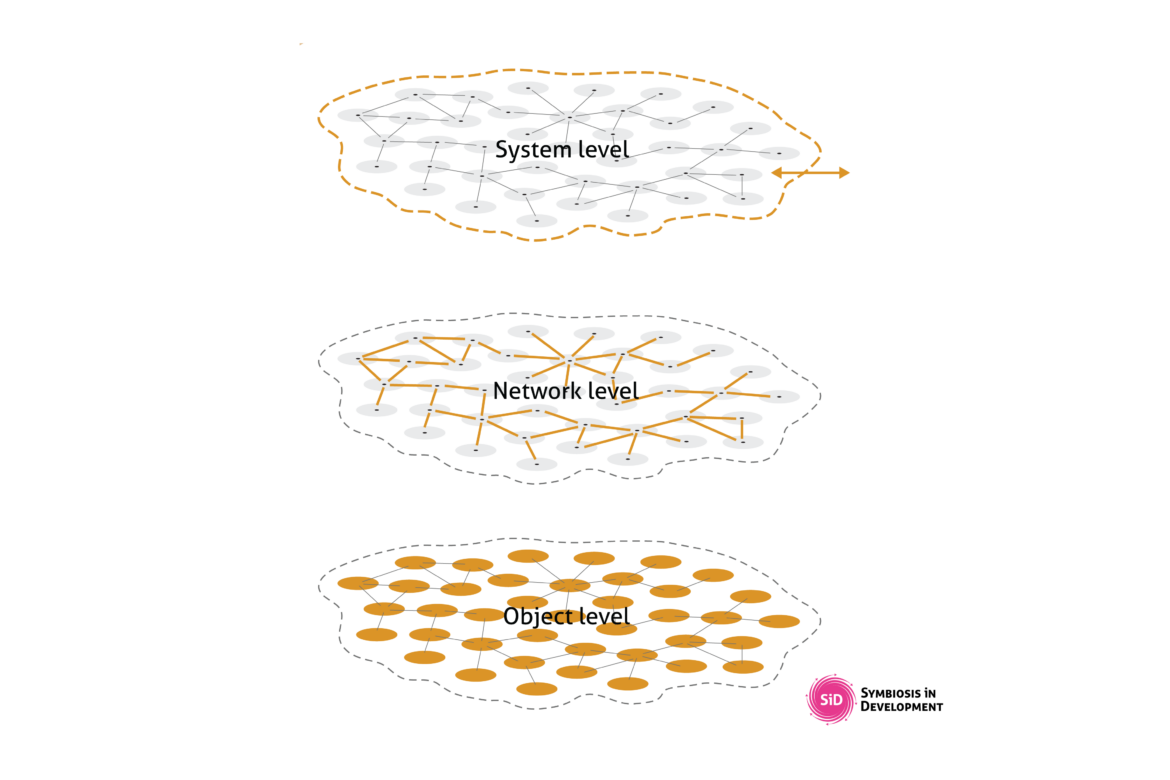Whether well-versed or just beginning to learn about systems thinking, it’s often a confusing and complex endeavor. However, it’s essential to grasp – especially if one is to understand how the world works and implement truly sustainable change.
The last article introduced the concept of a system, the SNO (System, Network, Object) hierarchy utilized in the SiD integrated systems thinking framework, and discussed the importance of setting a system’s boundary. The object level is the next level to introduce – for brevity before moving to the more complex network stage.

The objects found in the object level of a system are any physical objects you can see in a photo. Regarding systems thinking, these “things” are the most tangible and the least abstract concept to grasp.
Defining objects (almost) as simple as it seems
To put it simply, the “object level” encompasses all the physical and material things we see around us. For example, if we take an office space, the objects are everything you can point to and name, such as the building, furniture, carpets, equipment, people, notebooks, etc. The properties of these objects are generally defined by size, mass, color, and material composition and rarely change unless via an external force.
This object level is where sustainability is commonly encountered or approached through sustainable development, addressing things such as energy use, materials, economic impacts, and climate change.
The Triple Bottom Line, also referred to as the “Three P’s” (People, Planet, Profit), emerged in the early days of sustainability science and is still used to categorize sustainable projects. While impactful, this approach covers too few categories, masks the complexity and interconnectedness of systems, and falls short as a tool for a complete systems approach to sustainable analysis and design.

The ELSI stack, from the SiD systems thinking framework, is an example of a practical and holistic object categorization tool. It covers the full spectrum of society and allows users to quickly develop areas of interest and indicator sets for systems analysis.
Categorization From a Systems Thinking Perspective
For genuinely sustainable analysis and solutions, the objects within a defined system need to be known, observed, and understood in relation to each other. Not all things can or should be accounted for – only as many are relevant to the specific issue.
For example, a hospital’s focus may be the number of available beds and the patient recovery rate. A marketing project would instead focus on how outreach and behavioral impacts.
Because of the almost limitless variety of ‘objects’ across projects, it’s impossible to define a standard set of indicators. Nevertheless, it’s essential to account for the full spectrum of societal impacts, and the most efficient way to do this is via a categorization tool.
A categorization tool can be helpful as a guide to map and develop relevant indicators that fit each unique task and help develop roadmaps to genuinely sustainable actions and outcomes – as long as the tool covers the entire system to be analyzed.
Summary
After setting a system’s boundary, it’s essential to recognize the objects within said system related to the issue or project at hand. The physical nature of these objects makes them reasonably easy to identify and understand.
Still, categorization tools, such as the ELSI stack, can guide to ensure the entire spectrum is covered and holistic and truly sustainable solutions are one step closer. Everything else in a system you can’t see is likely to be a relationship and is part of the Network level, which we will discuss in the next and final installment.
LINKS:
- THINKING IN SYSTEMS PART 1: THE SYSTEM LEVEL
- THINKING IN SYSTEMS PART 2: THE OBJECT LEVEL
- THINKING IN SYSTEMS PART 3: THE NETWORK LEVEL
All views and opinions expressed on this site are those of the individual authors and comments on this site are the sole responsibility of the individual contributor.

